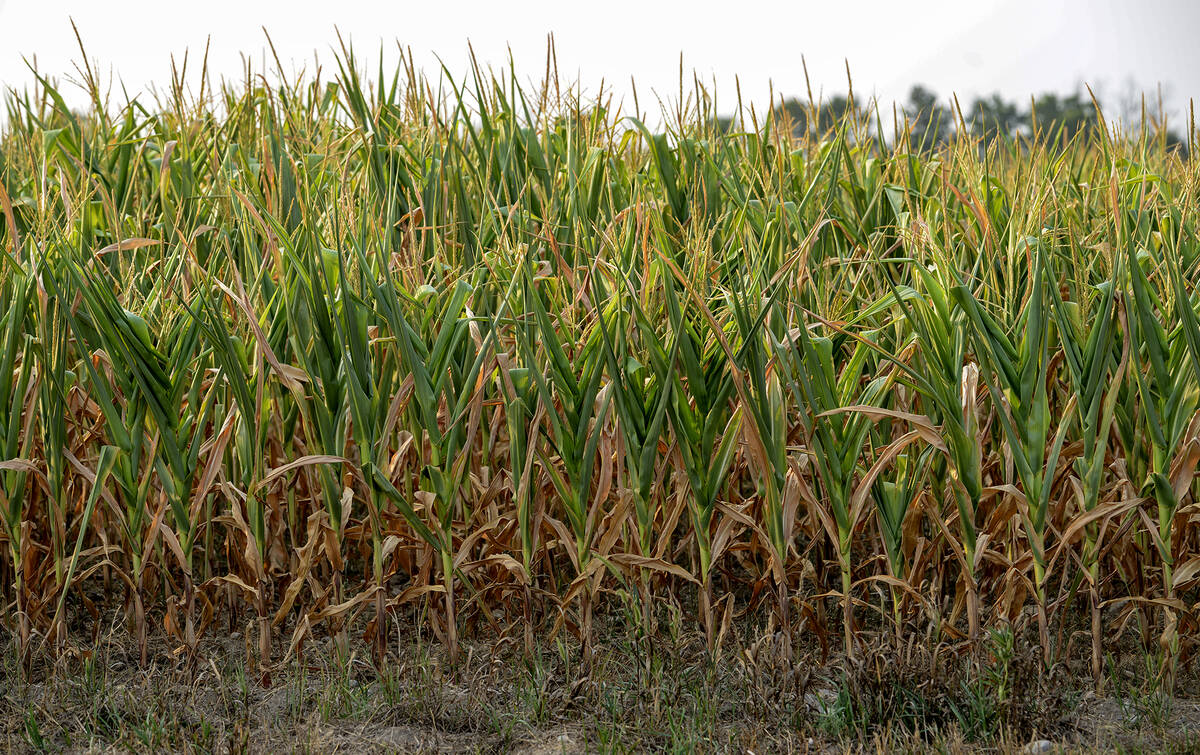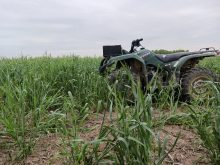Due to cool temperatures and wet conditions (in some areas) over the past week, essentially no meaningful acreage of corn or soybeans have been planted. Most field activities thus far have been field preparation such as manure applications and tillage.
Winter wheat
Fields that went into last winter in good shape, with uniform emergence and stands, continue to look good this spring. However, uneven, “spotty” stands that have been more commonly found on wet, heavy clay soils have struggled and some of those fields have been terminated. Applied nitrogen varies from region to region, but significant progress has been made over the last week. Estimates range from 30 to 75 per cent of acreage having received an application of nitrogen. The most advanced wheat fields have approached first node (Zadoks 30). Once nitrogen has been applied, the focus will shift to weed and disease management.
Read Also

Extreme variability marks Ontario’s 2025 corn crop
The yield potential of Ontario’s 2025 corn crop was lost in some areas due to extreme dry conditions.
Although winter annual weeds are already present, the emergence of annual weeds has just begun and as soil temperatures increase, species like common ragweed will emerge. When applying herbicides, it is important to pay attention to air temperatures, as adverse conditions can increase the risk of crop injury. Avoid making applications if large fluctuations in temperature (>10 C) are forecasted and/or the nighttime temperatures are predicted to dip below 5 C the day before and after you intend to make the application.
Weed control principles in field crops
Making sure that crops emerge in a weed-free environment ensures that any yield losses from weed competition are minimized. For example, recent research by Dr. Peter Sikkema (University of Guelph, Ridgetown Campus) has demonstrated significant economic losses from delayed weed control.
Herbicide resistance – Waterhemp
Waterhemp populations resistant to group 27 herbicides (e.g. Callisto) have been confirmed in 7 Ontario Counties (Chatham-Kent, Elgin, Essex, Lambton, Middlesex, Northumberland, The United Counties of Stormont, Dundas and Glengarry). This means that populations of waterhemp exist that are resistant to 5 different herbicide modes of action. Fortunately, many soil applied herbicides still provide effective early season control of this weed. An ongoing “integrated weed management” study conducted by the University of Guelph (Ridgetown Campus) has demonstrated that the best approach to managing waterhemp and minimizing its production and dispersal of weed requires the following approach:
- Plant a diverse crop rotation.
- Establish competitive cover crops after harvest, mow or clip if necessary to reduce seed production of any emerged weeds.
- Use effective soil applied herbicides with multiple modes of action.
- Plan on a second herbicide application to control later emerging seedlings.
Further resources on waterhemp identification and management:
- Field Crop News (search “waterhemp”)
- Ontario Crop Protection Hub (‘weed control’ search)
– To read the full field crop report for April 27, visit the Field Crop News website.












